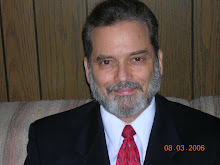1. Four Words: Body, Image, Talk, Feeling
When you feel overwhelmed and its an image that is bothering you,
say the word 'image' about every four seconds to yourself until the
intensity of your experience subsides.
If you are overwhelmed with an emotion, use the word 'feeling'.
If you are overwhelmed by a physical sensation, use the word 'body'.
If you are ruminating and its getting to you, use the word 'talk'.
Why should this simple technique work? When we are experiencing
intensity and it is over the top, whether sensation, emotion, imagery,
or the chatter of rumination, the emotional and arousal centers of the
lower brainstem are very active. Saying the applicable word stimulates
the higher order cognitive centers in the neo-cortex. This naturally
tunes down the over arousal. This technique was shared with me by
one of John Cabot Zinn's colleagues and is used in their stress clinic
for cancer patients.
2. The Ten Second Pause
At the top of every hour take a deep breath, let it out and tell yourself
that these ten seconds exist for the pure pleasure of your being alive.
Why should this work? The breath helps, but more importantly, if the
river of stress in your life is not interrupted, it does not decline, and
it may rise. When you start interrupting it, you are hitting the pause button.
Stopping even if for 10 seconds frequently helps.
3. Visualize for 1 to 3 times a day for 1-3 minutes each time your favorite
relaxing place, perhaps on the beach or wherever you can really let go and
unplug. The more days you do this the better you will feel until you feel
like you are never far away from that experience. Remember, the more
time you rhearse stressful anxious thoughts and worries the more conditioning
you give your body and mind to go in that directions. Changing the
conditioning and the mind and body will follow, and more associations
will form in the brain with these pleasant visualizations and thoughts.
4. Slow breath
We teach people with panic disorders to do controlled breathing. Breathing
3 seconds in and three seconds out is all that is necessary and keep going until
you are thinking more clearly. This breath stabilizes carbon dioxide in the blood
stream and corrects the often shallow and quick breath that they take. It is not necessary
to take huge amounts of air or to stress already sore chest muscles that are common with stress
and anxiety. Breath slowly through the nose unless you are stuffed up. As your muscles
relax your chest will expand exactly as it needs to with no effort on your part.
5. Self Suggestion
Often when we are panicked, anxious, overwhelmed, our mind is triggered by the
body to provide associations for these experiences. That's where the worries and fears and
catastrophic thinking come from. Respond to these emotional and out of proportion reactions
by telling yourself that that's what they are. Take a moment to refocus your mind on some very
happy moment, or moment of success, or other positive experience. Circle back to the
irrational out of proportion thoughts and direct your thoughts to this thought by saying
I have more positive and constructive and important things to think about and do, more
pleasurable and happy and exciting thoughts and experiences to focus on. Thank you
for the fire alarm, but there is no fire. As you continue to cycle back to the more important,
pleasurable, and happy things in your life, your mind is competing with the stressful
thoughts and sensations. Because the positive thoughts and experiences are so much more
compelling and enjoyable, the stress and anxiety loses its hold.
Wednesday, March 5, 2014
Subscribe to:
Comments (Atom)
